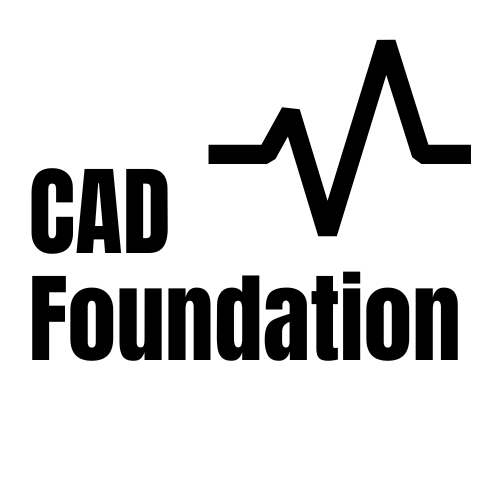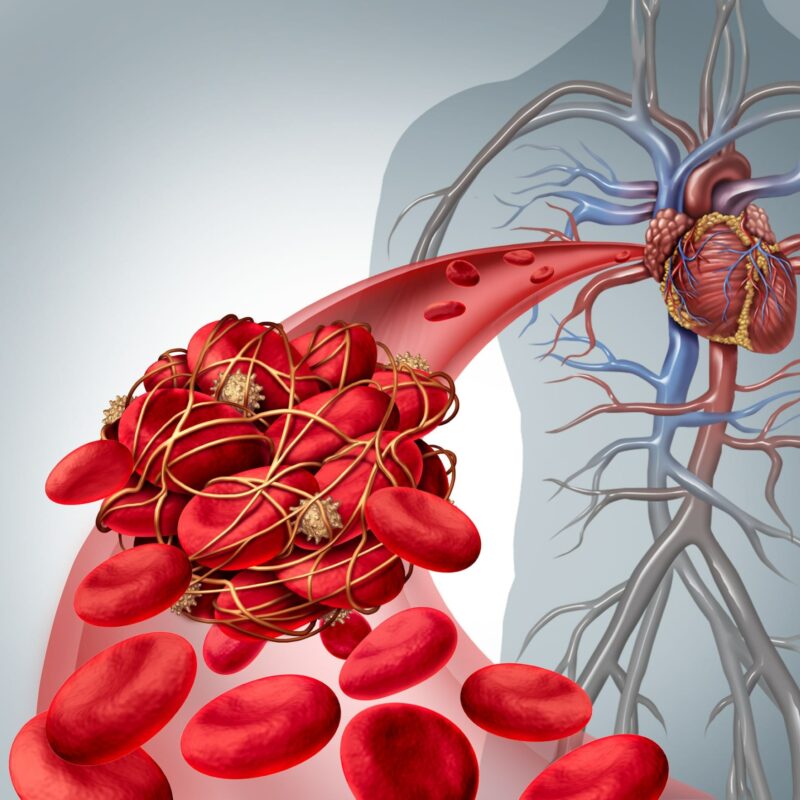Overview
Preventing acute coronary syndromes, which are serious heart conditions like heart attacks, is incredibly important for living a long and healthy life. Whether you’ve never had a heart event or are recovering from one, understanding the steps you can take is key. This information aims to help you or someone you know to reduce the risk of these life-threatening heart issues. By actively managing risk factors and following medical advice, we can significantly improve health outcomes and reduce the burden of heart disease, which sadly remains the leading cause of death worldwide.
There are two main types of prevention: primary prevention, which focuses on stopping a heart event from happening in the first place, and secondary prevention, which focuses on preventing future events once someone has already experienced an acute coronary syndrome. Both are crucial for maintaining heart health and improving quality of life.
In details:
Quick List for Prevention of Acute Coronary Syndrome
- Lifestyle modifications
- Blood pressure control
- Cholesterol management (lipid-lowering therapy)
- Diabetes management (glycemic control)
- Antiplatelet therapy
- Anticoagulant therapy
- Beta-blockers
- Renin-angiotensin system inhibitors (ACE inhibitors/ARBs)
- Cardiac rehabilitation
Primary Prevention of Acute Coronary Syndrome
Primary prevention means taking steps to prevent a heart attack (myocardial infarction) or other acute coronary syndrome from ever occurring. It is about managing existing risk factors and adopting healthy habits to avoid the first event. Key risk factors for heart disease include high cholesterol (known as dyslipidemia), high blood pressure (or hypertension), diabetes mellitus (high blood sugar), obesity, and smoking. The good news is that many of these factors can be changed or controlled through careful attention to your health.
Lifestyle changes are a powerful tool in primary prevention. Quitting smoking is one of the most impactful steps, as it’s a major risk factor globally and can halve the risk of a heart attack. Eating a healthy diet, such as a “Mediterranean-style” diet rich in fruits, vegetables, and fish, while reducing meat and saturated fats, is recommended. Regular physical activity, aiming for 20-30 minutes of exercise daily to the point of slight breathlessness, is also vital. Additionally, maintaining a healthy weight is crucial for heart health.
Beyond lifestyle, medications play a significant role in primary prevention for those at higher risk. Statins, which are medicines that lower cholesterol levels, are recommended based on an individual’s overall risk of developing atherosclerotic cardiovascular disease (ASCVD), a condition where plaque builds up in the arteries. Despite their known benefits, studies show that a notable number of people who later suffer their first acute coronary event were actually eligible for statin therapy but hadn’t started it. For example, in one study, 85% of patients with calculable heart risk needed statins for primary prevention, but only about two-thirds received them, often not at the right dose. Common statins include atorvastatin.
The use of aspirin for primary prevention is still debated and should be carefully considered with your doctor, weighing the potential benefits against risks like bleeding. Controlling high blood pressure with prescribed medications is another essential step. It’s important to work with your healthcare provider to ensure your blood pressure is within target ranges. For those with diabetes, effective management is critical, but achieving optimal blood sugar control (measured by glycated hemoglobin or HbA1c) can sometimes be challenging for patients who go on to experience heart events. Lastly, your doctor can calculate your cardiovascular risk score to help identify if you would benefit from preventive medications, though sometimes there isn’t enough information in medical records for a full assessment.
Secondary Prevention of Acute Coronary Syndrome
Secondary prevention refers to the measures taken after someone has already experienced an acute coronary syndrome, such as a heart attack, to prevent future heart attacks, strokes, or other cardiovascular complications. Patients who have had an acute coronary syndrome are at a significantly higher risk of having another event. Therefore, aggressive and sustained management is essential.
One of the cornerstones of secondary prevention is dual antiplatelet therapy (DAPT). This involves taking two types of medicines that prevent blood clots: aspirin, which should be started immediately and continued for life (unless you can’t tolerate it, in which case a different antiplatelet like clopidogrel may be used), and a P2Y12 inhibitor. P2Y12 inhibitors, such as ticagrelor or prasugrel, are generally preferred over clopidogrel and are recommended for 12 months in most patients after an acute coronary syndrome. For patients at a very high risk of future heart events (for example, those with diabetes, kidney disease, peripheral artery disease, or disease in multiple heart arteries) and a low risk of bleeding, this dual therapy might be continued for longer than 12 months. However, this extended duration does increase the risk of bleeding. Conversely, if a patient has a high risk of bleeding, a shorter duration of DAPT (e.g., 6 months) might be recommended by their heart specialist.
In certain high-risk individuals, combining an antiplatelet with a low dose of an anticoagulant (a medicine to prevent blood clots) like rivaroxaban has been shown to reduce cardiovascular events, particularly in those with stable atherosclerotic vascular disease who have had a previous heart attack. It’s important to remember that this combination also carries an increased risk of bleeding.
Intensive lipid-lowering therapy is another critical component. This begins with prescribing high-intensity statins for all patients immediately after a heart attack, regardless of their initial cholesterol levels. If the target level of “bad cholesterol” (low-density lipoprotein cholesterol or LDL-C) is not reached (e.g., below 1.4 mmol/L) within 4-6 weeks, additional medications like ezetimibe should be added. If the LDL-C goal is still not achieved, PCSK9 inhibitors, such as evolocumab or alirocumab, may be introduced. These are powerful medicines that significantly reduce LDL-C and the risk of cardiovascular events. The aim is to lower LDL-C as much as possible with the maximum tolerated therapy.
Additionally, neurohormonal agents are a standard part of secondary prevention. Beta-blockers are typically started within 24 hours of the event if there are no reasons not to, and usually continued for at least three years. These medicines help reduce the heart’s workload. Medications that modify the renin-angiotensin aldosterone system (RAAS), such as ACE inhibitors or angiotensin receptor blockers (ARBs), are given within 24 hours to patients with certain conditions like fluid in the lungs (pulmonary congestion) or reduced heart pumping capacity. Aldosterone antagonists are recommended for specific patients with heart failure and diabetes who are already on ACE inhibitors/ARBs and beta-blockers.
New areas of focus in secondary prevention include targeting inflammation. Chronic inflammation is increasingly recognized as a key factor in heart disease and recurrent events. Medications like colchicine, traditionally used for gout, have shown some promise in reducing major adverse cardiovascular events after a recent heart attack, though more research is needed.
Elevated triglycerides can also be addressed with specific treatments, such as icosapent ethyl, which has been shown to reduce cardiovascular events even when patients are already on statins. Furthermore, for patients with Type 2 diabetes, certain glucose-lowering agents have been found to reduce cardiovascular events and even mortality, independent of their effects on blood sugar.
Finally, adherence to these long-term therapies is paramount for success. Studies show that many patients stop taking their medicines over time, with nearly 30% discontinuing one or more within 90 days of their acute coronary syndrome. Factors influencing adherence can be complex, including a patient’s understanding of their condition, their mood (e.g., depression), and how well the healthcare system supports them with early follow-up and ongoing education. Therefore, a comprehensive approach involving patient education and active engagement from healthcare providers is key to improving outcomes.
Other similar questions
What is acute coronary syndrome?
It is a group of heart conditions that includes unstable angina (chest pain without heart muscle damage) and myocardial infarction (a heart attack where heart muscle damage occurs, classified as ST-segment elevation myocardial infarction or non-ST-segment elevation myocardial infarction)
What causes a heart attack?
Most commonly, it is caused by a sudden blockage in one of the heart’s arteries, usually due to a blood clot forming on a damaged or ruptured plaque (a fatty deposit) inside the artery wall.
How are heart attacks diagnosed?
Diagnosis typically relies on the patient’s symptoms (such as chest pain), changes seen on an electrocardiogram (ECG), and blood tests that measure markers of heart muscle injury, like troponin. Modern high-sensitivity troponin tests allow for rapid and accurate diagnosis.
Resources
- Bergmark BA, Mathenge N, Merlini PA, Lawrence-Wright MB, Giugliano RP. Acute coronary syndromes. Lancet. 2022 Apr 2;399(10332):1347-1358. doi: 10.1016/S0140-6736(21)02391-6. PMID: 35367005; PMCID: PMC8970581.
- Smith JN, Negrelli JM, Manek MB, Hawes EM, Viera AJ. Diagnosis and management of acute coronary syndrome: an evidence-based update. J Am Board Fam Med. 2015 Mar-Apr;28(2):283-93. doi: 10.3122/jabfm.2015.02.140189. PMID: 25748771.
- Bahit MC, Korjian S, Daaboul Y, Baron S, Bhatt DL, Kalayci A, Chi G, Nara P, Shaunik A, Gibson CM. Patient Adherence to Secondary Prevention Therapies After an Acute Coronary Syndrome: A Scoping Review. Clin Ther. 2023 Nov;45(11):1119-1126. doi: 10.1016/j.clinthera.2023.08.011. Epub 2023 Sep 9. PMID: 37690915.
- Gallone G, Baldetti L, Pagnesi M, Latib A, Colombo A, Libby P, Giannini F. Medical Therapy for Long-Term Prevention of Atherothrombosis Following an Acute Coronary Syndrome: JACC State-of-the-Art Review. J Am Coll Cardiol. 2018 Dec 11;72(23 Pt A):2886-2903. doi: 10.1016/j.jacc.2018.09.052. PMID: 30522652.
- Gaviria-Mendoza A, Zapata-Carmona JA, Restrepo-Bastidas AA, Betancur-Pulgarín CL, Machado-Alba JE. Prior Use of Medication for Primary Prevention in Patients with Coronary Syndrome. J Prim Care Community Health. 2020 Jan-Dec;11:2150132720946949. doi: 10.1177/2150132720946949. PMID: 32755281; PMCID: PMC7543101.
- Silverio, A.; Cancro, F.P.; Esposito, L.; Bellino, M.; D’Elia, D.; Verdoia, M.; Vassallo, M.G.; Ciccarelli, M.; Vecchione, C.; Galasso, G.; et al. Secondary Cardiovascular Prevention after Acute Coronary Syndrome: Emerging Risk Factors and Novel Therapeutic Targets. J. Clin. Med. 2023, 12, 2161. https://doi.org/10.3390/jcm12062161
- Fitchett DH, Leiter LA, Lin P, Pickering J, Welsh R, Stone J, Gregoire J, McFarlane P, Langer A, Gupta A, Goodman SG. Update to Evidence-Based Secondary Prevention Strategies After Acute Coronary Syndrome. CJC Open. 2020 Apr 10;2(5):402-415. doi: 10.1016/j.cjco.2020.04.002. PMID: 32995726; PMCID: PMC7499366.
- Isted A, Williams R, Oakeshott P. Secondary prevention following myocardial infarction: a clinical update. Br J Gen Pract. 2018 Mar;68(668):151-152. doi: 10.3399/bjgp18X695261. PMID: 29472228; PMCID: PMC5819978.



Leave a Reply